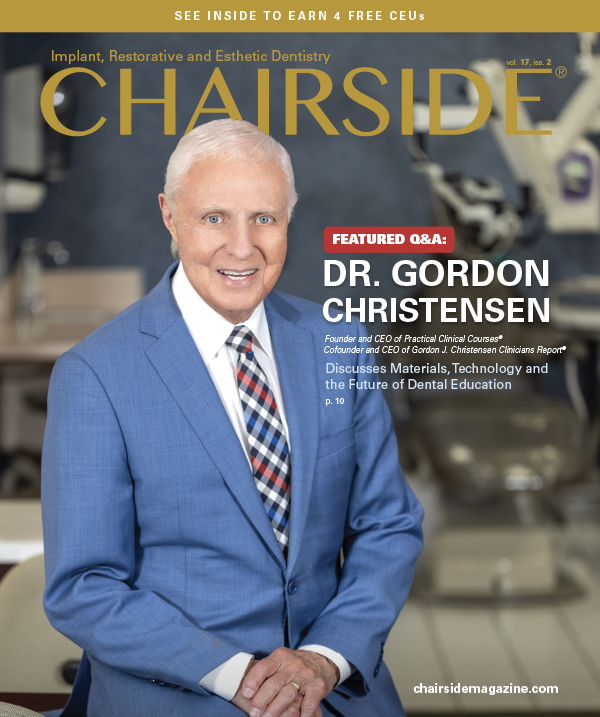Preventing Migraines Doesn’t Have to Be a Headache
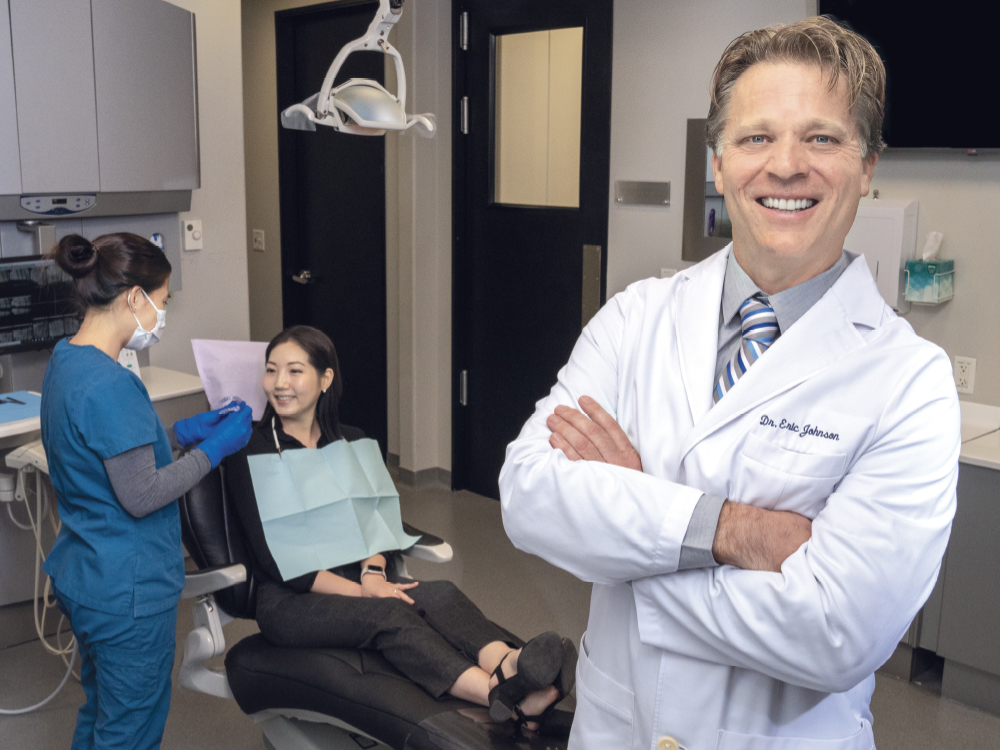
When we see our patients in pain, we instinctively want to alleviate their suffering. Fifteen years ago, I encountered a series of patients who presented with jaw and head pain, but at that stage of my career, I did not have the right tools to help them.
Patients were burdened with myofascial pain, migraine headaches, broken restorations or chipped teeth. I referred some patients to a pain specialist and put others in bite splints. It was what dental school had taught me to do. The bite splints were effective at reducing the damaging effects of bruxism, but they were incapable of repositioning the temporomandibular joint (TMJ) and relaxing the associated elevating muscles. That’s when a colleague introduced me to the NTI-tss Plus® migraine prevention device, and it completely changed how I practice dentistry
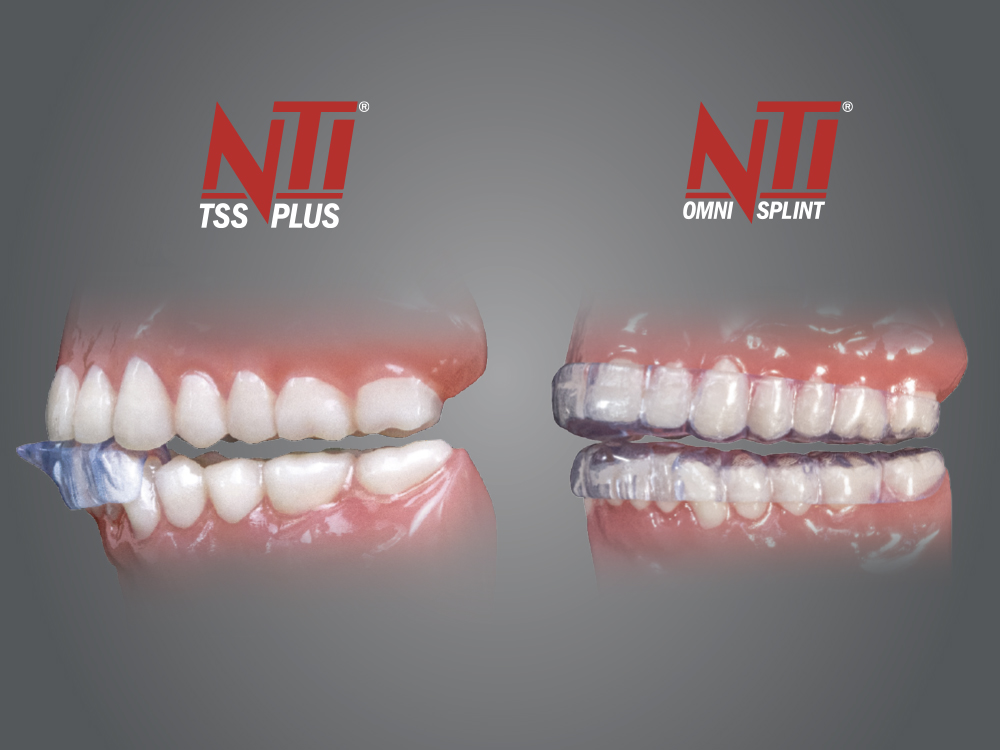
The NTI-tss Plus and the NTI OmniSplint reduce the load on both condyles and reduce muscle strain. Their 3D-printed construction offers the highest level of accuracy for optimal fit and comfort.
A GUIDE TO PRESCRIBING NTI DEVICES
Today, the NTI-tss Plus and the new dual, full-arch NTI OmniSplint® migraine prevention devices are integral to the treatment I offer my patients who experience migraines and jaw pain. Implementing these devices and protocols in my practice has been a seamless process, and the clinical steps needed for prescribing an NTI device make delivery fast and simple:
- Ask your patients if they frequently experience tension-type headaches, migraines or jaw pain.
- If the patient experiences those symptoms, examine the occlusion and look for signs of wear on the teeth and restorations.
- If the occlusion is misaligned and wear is evident, prescribe an NTI.
- Take a bite registration and a protrusive measurement.
- Send these measurements to the lab, along with the impressions and Rx form.
- When the 3D-printed NTI is delivered to your office, try in the device and check the patient’s occlusion.
The NTI-tss Plus and the NTI OmniSplint reduce the load on both condyles and reduce muscle strain. Their 3D-printed construction offers the highest level of accuracy for optimal fit and comfort. The NTI-tss Plus and NTI OmniSplint work by discluding the posterior and cuspid teeth, preventing the patient from clenching. If the posterior teeth or cuspids are contacting the opposing dentition, or if the protrusive movement extends past the discluding pointstop (the small resin nodule at the front of the device), the appliance is not fitting properly and needs to be adjusted or remade.
Although they accomplish the same goal, the NTI-tss Plus and the NTI OmniSplint provide dentists with two distinct options for treatment. The NTI-tss Plus can be worn on the upper or lower arch, but it covers only the anterior teeth. The NTI OmniSplint is worn on both arches and covers both the anterior and posterior teeth.
To determine if the NTI device is effective and functioning properly, bring the patient back for a followup appointment three weeks later. Schedule a morning exam, and ask the patient to wear the device to the appointment. This way, you can keep the muscles relaxed. Next, take the NTI device out of the patient’s mouth, and record the first point of tooth contact. This will enable you to note any possible bite imbalances. If the patient is wearing the device, the TMJ should be in its natural, unstrained biological position.
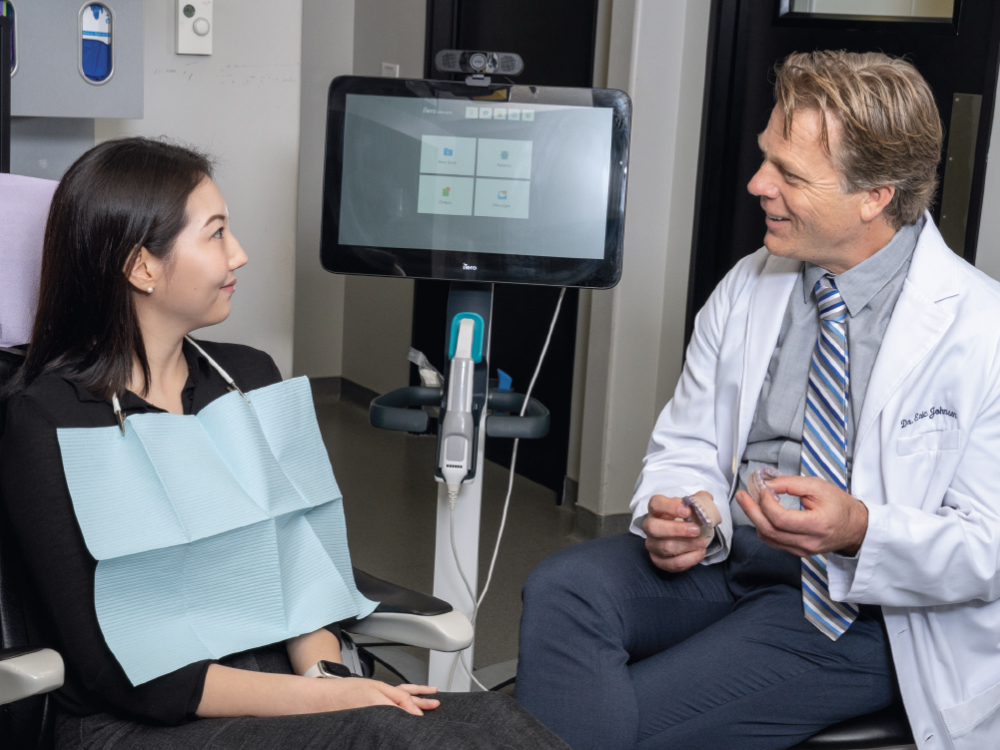
Showing patients a sample of the NTI-tss Plus and NTI OmniSplint is a great way to teach them how a migraine prevention device can help them.
AN NTI OMNISPLINT CASE EXAMPLE
For a more practical example of this process, let’s look at my patient Grace. When my hygienist asked her if she had been experiencing tension-type headaches, migraines or jaw pain, Grace admitted that she had been suffering from recurring migraines for years. The hygienist told her a little bit about the NTI devices, and when I came in to examine the patient, I knew what to look for.
Grace readily accepted the treatment plan. Like most migraine and jaw pain patients, she was highly motivated to get out of pain. I chose the NTI OmniSplint for this case because its design gives me confidence that the full occlusal support across both arches disperses any potentially harmful anterior force evenly. We then took impressions of both arches, a bite registration and a protrusive measurement. This measurement indicates how far a patient can extend his or her lower jaw. The patient is fully protrusive at about 12 mm, which I call “the bulldog bite.” I noted on the Rx to prescribe a Glidewell Clinical Twinpak™, which would allow Grace to keep one device at home and one device for her work travels.
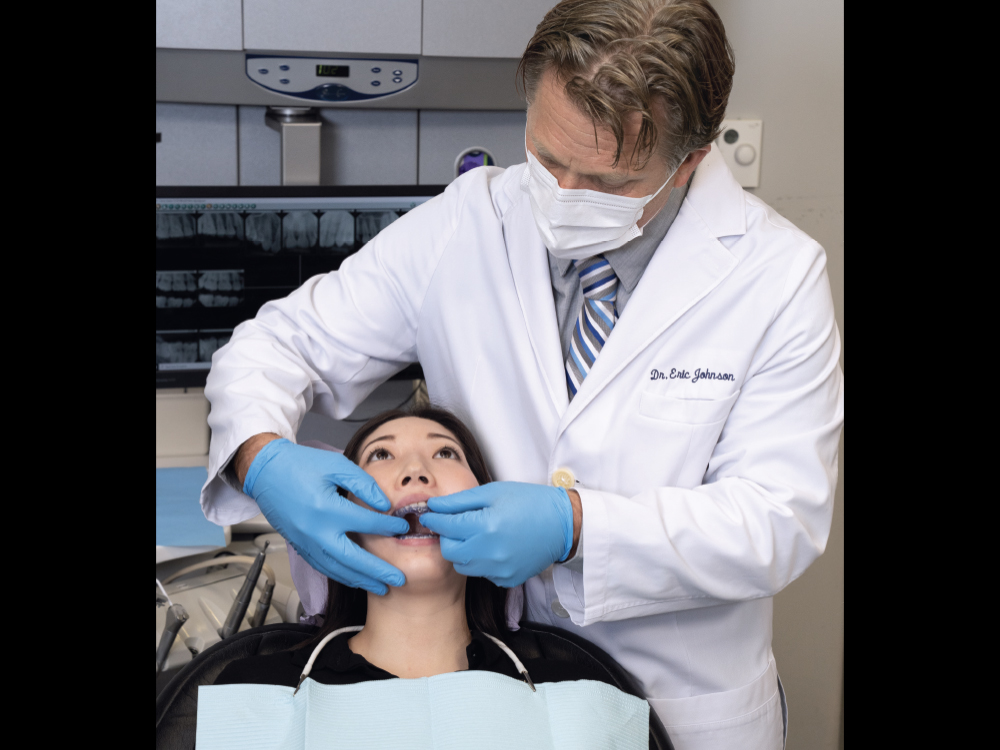
The NTI OmniSplint offers easy delivery and predictable results.
The device came back from the lab quickly and within a few days, we had Grace back in the chair. The patient expressed that the device was comfortable, and she felt she would have no trouble sleeping while wearing it. Encouraged, I examined the fit and occlusion. When the patient bit down, her posteriors and canines did not touch, and the protrusive movement did not extend past the anterior stoppoint — exactly what I was looking for.
On her three-week follow-up appointment, Grace came in wearing her NTI OmniSplint and a huge smile. Her headaches were greatly reduced, she was also feeling more rested, her jaw did not hurt in the mornings, and she had not missed a day of work due to a migraine. She explained to me how transformative the NTI device had been in her life after just three weeks of wearing it. There are so many patients just like Grace in our practices who can benefit from an NTI device. It’s time to treat them.

Time and time again, NTI devices have proven to be a simple, effective solution to migraine and jaw pain.
CONCLUSION
When you consider that migraines are the second-leading cause of all global disability, you begin to realize just how many of your patients suffer from them.1 As a nonpharmacological solution to migraines, the NTI-tss Plus and NTI OmniSplint are often the only options for patients who are pregnant, nursing or who take conflicting oral medications. When you help get these patients out of pain, you create a patient for life.
Looking to get your patients out of pain? Visit glidewell.com/migraine-prevention to learn more.
NTI-tss Plus is a registered trademark of Boyd Research, Inc. NTI OmniSplint is a registered trademark of James Boyd.
References
- ^GBD 2016 Disease and Injury Incidence and Prevalence Collaborators. Global, regional, and national incidence, prevalence, and years lived with disability for 328 diseases and injuries for 195 countries, 1990-2016: a systematic analysis for the Global Burden of Disease Study 2016. Lancet. 2017 Sep 16;390(10100):1211-59.

